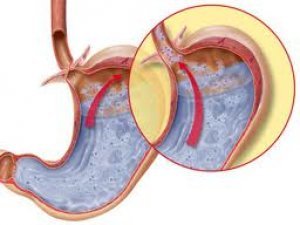
Occurs when stomach acid or stomach contents back up into the esophagus.
Symptoms of GERD:
-Burning sensation in the chest
-Chest pain
-Difficulty swallowing
-Dry cough
-Sore throat or hoarseness
-A mass in your throat Sensation of presence
– Food or sour liquid coming into the mouth
REASON:
– Loss of function of the muscle mass at the lower end of the esophagus that prevents food from escaping from the stomach to the esophagus
RĪSK FACTORS:
-Obesity
-Pregnancy
-Smoking
-Dry mouth
-Herniation of the stomach into the diaphragm muscle
-Asthma
-Diabetes
-Stomach delayed discharge into the intestine
-Connective tissue diseases (scleroderma)
COMPLICATIONS:
-Narrowing of the esophagus
-Eesophageal ulcer
-Precancerous changes in the esophagus (Barrett esophagus)
DIAGNOSTIC METHODS: (
) -Ph meter: It measures the amount of acid that escapes into the esophagus for 24 hours.
-Gastroscopy
-Manometry: used to measure the movements of the esophagus.
TREATMENT:
-Antacids: neutralize stomach acid. ( Gaviscon, Rennie, Antepsin…)
-H2 receptor blockers: they reduce acid production. ( famotidine, ranitidine…)
-Proton pump inhibitors: stops acid production and heals the esophagus. ( lansoprazole, omeprazole, pantaprazole, rabeprazole, esomeprazole)
– Nissen Fundoplication surgery: The muscle mass at the lower end of the esophagus is tightened by surgery, preventing the escape of stomach contents into the esophagus.
-Links ring is attached to the junction of the esophagus and stomach, and the muscle mass is made tighter.
RECOMMENDED LIFESTYLE CHANGES:
-Losing weight
-Avoiding tight clothing
-Avoiding trigger foods and drinks; fatty and fried foods, tomatoes, alcohol, chocolate, mint, garlic, onions and caffeine. —Avoiding foods that are known to trigger one’s own reflux.
– Not to eat too much at one meal, to eat little by little during the day.
-Lying down or sleeping at least 3 hours after eating.
-Raising the head of the bed.
-No smoking

